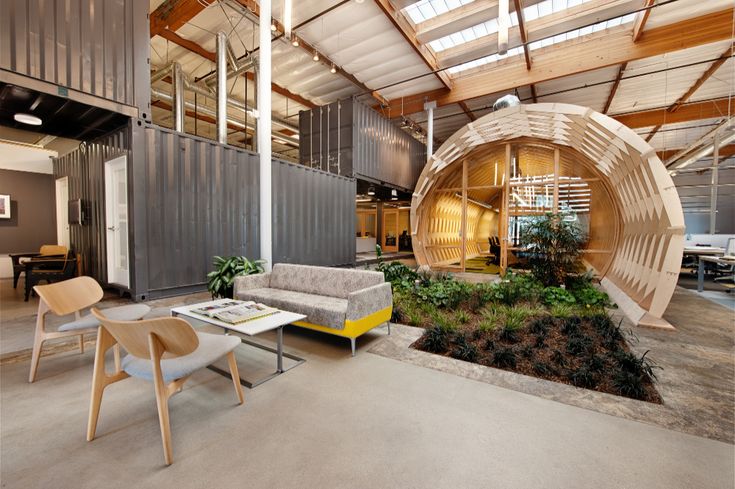How Can We Make Renovations Sustainable? A Complete Guide

Sustainability has become an increasingly important consideration in our daily lives, influencing everything from the products we buy to the way we build and renovate our homes. As environmental concerns grow, many homeowners are looking for ways to make their renovation projects more sustainable. Sustainable renovations not only reduce the environmental impact of a home improvement project but can also lead to long-term savings on energy bills and an increase in property value.
This guide explores how you can make your renovations more sustainable, focusing on energy efficiency, material choices, waste reduction, and other strategies to create an eco-friendly home.
Steps to Make Renovations Sustainable
When planning a sustainable renovation, it’s essential to approach each phase with a focus on reducing environmental impact, enhancing energy efficiency, and choosing eco-friendly materials. By following these steps, you can ensure your renovation project is not only environmentally responsible but also cost-effective and beneficial for your home’s long-term value.
1. Plan for Energy Efficiency
One of the most impactful ways to make a renovation project more sustainable is by improving the energy efficiency of your home. Energy-efficient homes use less energy for heating, cooling, and powering appliances, which reduces both your utility bills and your carbon footprint.
Upgrade Insulation: Proper insulation is key to maintaining a comfortable indoor temperature and reducing the need for heating and cooling. During a renovation, consider upgrading your home’s insulation, particularly in the attic, walls, and floors. High-quality insulation materials, such as spray foam, cellulose, or rigid foam, can significantly reduce energy loss.
Install Energy-Efficient Windows and Doors: Old, drafty windows and doors can be a major source of energy loss. Replacing them with energy-efficient models that have low-emissivity (Low-E) coatings, double or triple glazing, and proper sealing can greatly improve your home’s thermal performance.
Choose Energy Star Appliances: When renovating your kitchen, laundry room, or any area that requires appliances, opt for Energy Star-rated models. These appliances are designed to use less energy and water while maintaining high performance, leading to lower utility bills and a reduced environmental impact.
Use Smart Thermostats and Lighting: Smart thermostats can optimize your home’s heating and cooling by learning your schedule and adjusting the temperature accordingly. Similarly, smart lighting systems can reduce energy consumption by using sensors and timers to ensure lights are only on when needed. These technologies not only contribute to energy savings but also enhance the convenience and comfort of your home.
2. Choose Sustainable Materials
The materials you select for your renovation project play a significant role in its overall sustainability. Sustainable materials are those that have a lower environmental impact, either through their production process, their ability to be recycled, or their durability.
Opt for Recycled or Reclaimed Materials: Recycled materials, such as recycled glass countertops, reclaimed wood, and recycled metal roofing, are excellent choices for sustainable renovations. Using these materials reduces the demand for new resources and minimizes waste. Reclaimed materials, such as old barn wood or bricks, also add character and uniqueness to your home.
Select Sustainable Wood Products: If you’re using wood in your renovation, choose products that are certified by the Forest Stewardship Council (FSC). FSC-certified wood comes from responsibly managed forests that prioritize environmental protection, social benefits, and economic viability. Additionally, consider bamboo, which is a fast-growing, renewable resource that can be used for flooring, cabinetry, and other applications.
Consider Low-VOC Paints and Finishes: Volatile organic compounds (VOCs) are harmful chemicals found in many conventional paints, stains, and finishes. Low-VOC or zero-VOC products reduce indoor air pollution, making your home healthier for you and your family. These environmentally friendly options are available in a wide range of colors and finishes, ensuring you don’t have to compromise on style.
Use Eco-Friendly Insulation: Some insulation materials, like spray foam, can have a high environmental impact. Consider using eco-friendly alternatives like sheep’s wool, cotton (recycled denim), or cellulose insulation made from recycled paper. These materials not only provide effective insulation but are also biodegradable and have a lower environmental impact.
3. Minimize Waste and Recycle
Renovation projects can generate a significant amount of waste, much of which ends up in landfills. By planning carefully and taking steps to minimize waste, you can make your renovation more sustainable.
Deconstruct, Don’t Demolish: Instead of demolishing existing structures, consider deconstruction, which involves carefully dismantling buildings to salvage reusable materials. Items such as doors, windows, cabinets, and fixtures can be reused in your renovation or donated to organizations that specialize in building material reuse.
Plan for Accurate Material Quantities: Overordering materials is a common issue in renovations that leads to unnecessary waste. Work with your contractor to accurately calculate the amount of materials needed for your project. This not only reduces waste but also saves you money.
Recycle Construction Waste: Many materials used in renovations, such as metal, wood, and concrete, can be recycled. Set up a recycling plan with your contractor to ensure that recyclable materials are separated from general waste and sent to the appropriate facilities. Additionally, consider using materials that are recyclable at the end of their life, ensuring that they can be repurposed rather than disposed of.
Repurpose and Upcycle: Look for opportunities to repurpose or upcycle materials within your renovation. For example, old doors can be turned into unique tables or headboards, and leftover tiles can be used to create a mosaic backsplash. Upcycling not only reduces waste but also adds a creative, personalized touch to your home.
4. Focus on Water Efficiency
Water conservation is another critical aspect of sustainable renovations. By making water-efficient choices, you can reduce your home’s water consumption and lower your utility bills.
Install Low-Flow Fixtures: Low-flow faucets, showerheads, and toilets are designed to use less water without sacrificing performance. These fixtures can significantly reduce your home’s water usage, making them a smart choice for any sustainable renovation.
Choose Water-Efficient Appliances: When replacing appliances like dishwashers and washing machines, look for models with the WaterSense label. These appliances are certified to use less water while still providing excellent performance.
Implement Rainwater Harvesting Systems: If you’re renovating your home’s exterior, consider installing a rainwater harvesting system. These systems collect and store rainwater for use in landscaping, gardening, or even flushing toilets. Rainwater harvesting not only reduces your reliance on municipal water but also helps manage stormwater runoff.
Use Permeable Paving: For driveways, walkways, and patios, consider using permeable paving materials that allow rainwater to pass through and be absorbed into the ground. Permeable paving helps reduce stormwater runoff, recharges groundwater supplies, and reduces the risk of flooding.
5. Improve Indoor Air Quality
Indoor air quality is an often-overlooked aspect of sustainable renovations. Poor air quality can have a significant impact on your health, so it’s important to choose materials and systems that contribute to a healthy indoor environment.
Use Natural and Non-Toxic Materials: As mentioned earlier, low-VOC paints and finishes are a great choice for improving indoor air quality. Additionally, consider using natural materials such as wool carpets, natural fiber rugs, and untreated wood to reduce the number of harmful chemicals in your home.
Install Proper Ventilation: Good ventilation is essential for maintaining healthy indoor air. Ensure that your home’s ventilation system is up to date and consider installing energy-efficient exhaust fans in kitchens and bathrooms to remove moisture and pollutants. Heat recovery ventilators (HRVs) or energy recovery ventilators (ERVs) can also improve indoor air quality while conserving energy.
Incorporate Plants: Adding indoor plants to your home can help improve air quality by absorbing pollutants and releasing oxygen. Some plants, such as spider plants, peace lilies, and snake plants, are particularly effective at filtering indoor air.
6. Prioritize Renewable Energy
Incorporating renewable energy sources into your renovation is a powerful way to make your home more sustainable. While some renewable energy systems require a significant upfront investment, they can lead to substantial long-term savings and reduce your reliance on fossil fuels.
Install Solar Panels: Solar panels are one of the most popular renewable energy options for homeowners. They can be installed on your roof or in your yard and can provide a significant portion of your home’s electricity needs. Many governments offer incentives or rebates for installing solar panels, making them more affordable.
Consider Solar Water Heaters: Solar water heaters use the sun’s energy to heat water for your home. They are an efficient and environmentally friendly alternative to traditional water heaters and can reduce your water heating costs by 50% or more.
Explore Geothermal Heating and Cooling: Geothermal systems use the stable temperature of the earth to heat and cool your home. While the installation cost is higher than traditional HVAC systems, geothermal systems are highly efficient and can reduce your energy bills significantly.
Conclusion
Making renovations sustainable is not just about reducing environmental impact; it’s about creating a home that is healthier, more efficient, and built to last. By focusing on energy efficiency, choosing sustainable materials, minimizing waste, conserving water, improving indoor air quality, and incorporating renewable energy, you can make your renovation project a model of sustainability. These strategies not only benefit the environment but also enhance your quality of life and can even increase the value of your home. Whether you’re undertaking a small renovation or a major overhaul, every step towards sustainability counts, making a positive impact on your home and the planet.
